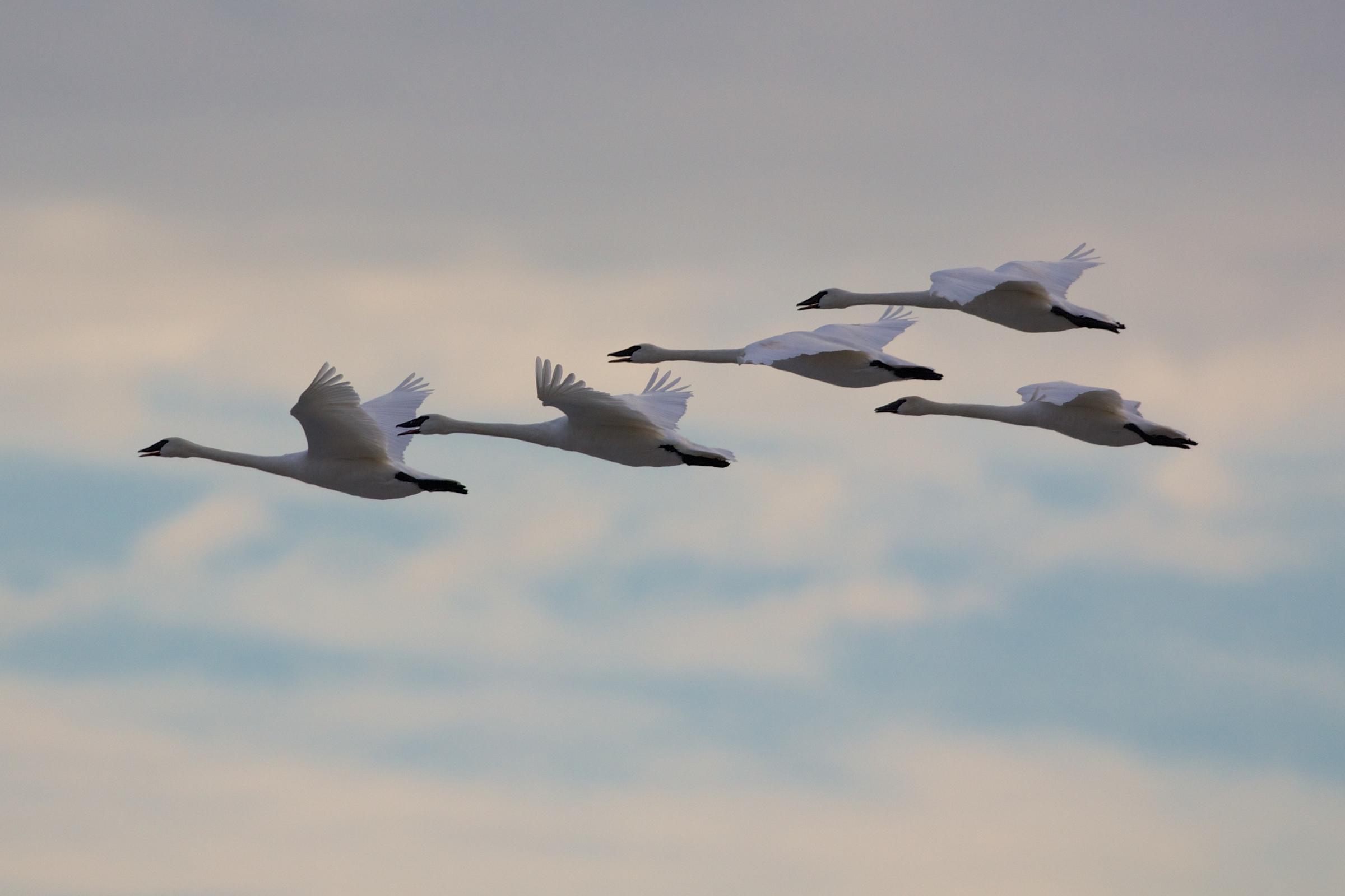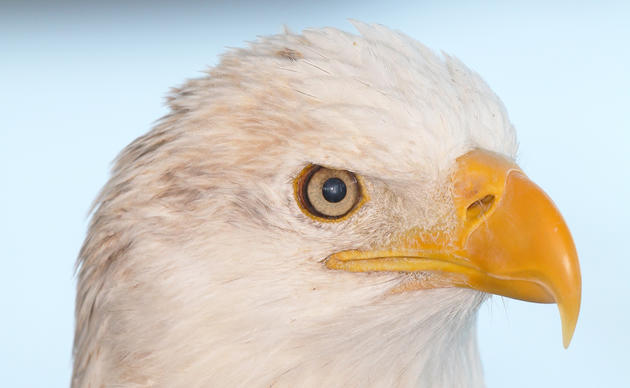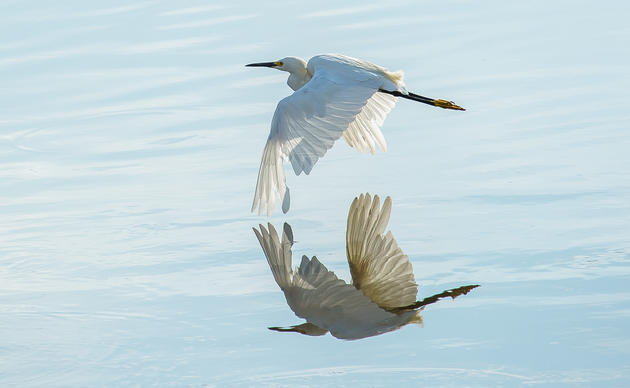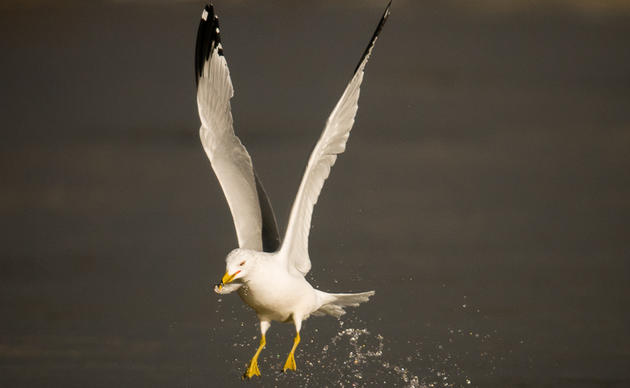Trumpeter Swans were on the brink of extinction when The US Fish & Wildlife Service began population restoration efforts in the 1960s. The Trumpeter Swan Society was formed soon after to aid these efforts. Conservation measures have since successfully fueled the swan’s recovery, however various states list this species as either state-threatened or state-endangered.
As re-population efforts took hold, Trumpeter Swans began to rebound in their former range. The first few swans reached Riverlands in the early 1990s and have since flourished here. In response to the swan’s increasing numbers, The Trumpeter Swan Society, the Audubon Center at Riverlands, U.S. Army Corps of Engineers, St. Louis Audubon Society, and the Audubon Society of Missouri initiated the Great Rivers Trumpeter Swan Watch in 2011.
Trumpeter Swans typically migrate to Riverlands in early November and stay through mid-February. During this period, volunteer community scientists from the St. Louis Audubon Society and the Audubon at Riverlands conduct the Great Rivers Trumpeter Swan Watch, a series of early morning bi-weekly swan counts. Data from these surveys help land managers better understand the habitat conditions essential to the Trumpeter Swans overwintering needs. Today, the overwintering population of Trumpeter Swans at Riverlands has reached as high as 2,300!
Given humans’ ability to rapidly alter ecosystems, which in turn places wildlife at great risk, we continue to take measures to protect North America’s largest native waterfowl. If you are interested in submitting Trumpeter Swan observations or being a part of the Great Rivers Trumpeter Swan Watch, please contact Tara Hohman, Conservation Science Associate, at: tara.hohman@audubon.org.
How you can help, right now
Programs
The Audubon Center at Riverlands is a great place to bring your classroom or group!
Volunteer With Us!
Riverlands relies on our many skilled and talented volunteers.




